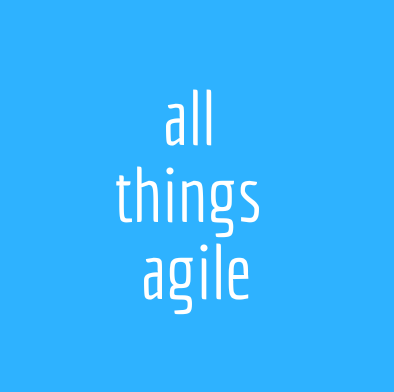
You know those people that just put you at ease when you talk to them? You trust everything they say and like to consult them. Well chances are, they are using SCARF!
In today’s blog we will look into the SCARF model and how it can be a game changer in your communication, especially in organizational and change contexts.
If you’d rather watch a video than read, check out my Youtube video on the topic:
Table of Contents
ToggleWhat is the SCARF model?
The SCARF model helps you be a better communicator and understand the human side of change. It was created by Dr. David Rock who later founded the NeuroLeadership Institute, and is centered around 5 visceral dimensions of human response, in particular related to patterns of language and interaction. The model helped to uncover the realization that conversations are more than a mere exchange of words, and through the use of SCARF, you can either spark or destroy the motivations of your employees. The 5 dimensions can elicit a response of fear and threat, or safety and reward.
The 5 Domains
Status
Status speaks about our sense of personal worth and where we are in relation to other people. When you criticize people, either publicly or privately, or give consistent unsolicited advice, you start to diminish their sense of status and worth. This is the threat they perceive in an interaction with you. Conversely, their sense of worth is heightened or rewarded when you give strength based feedback and recognize their hard work.
During agile transitions, new roles are created and old roles disappear. The skills that got people here are not necessarily needed in the next phase for the organization. In these situations, the status and sense of worth in people is highly threatened, especially when agile transitions are deployed in an industrial manner. As an agile coach, you want to help leaders format their messages and interactions in a way that doesn’t threaten people’s sense of worth. As you come into contact with people, either casually or in coaching, you want to look for ways to help them restore, or at least not further erode, their status.
Certainty
Certainty is having a sense of what the future holds for us. While you can’t know everything, we all want to know at least the broad strokes. As you can imagine, a sense of threat is activated when we have no idea why or how an agile transformation is happening. If you can provide next steps, dates, and set clear expectations about roles or processes, people can obtain a level of certainty.
In a VUCA environment (Volatility, Uncertainty, Complexity, Ambiguity), adding certainty can feel more complicated. As a coach, helping people understand their process with you can help. Let them know when you will meet, how often, what your role is, and always respect confidentiality in your sessions. Every time you host a meeting, make sure you are predictable. Be on time and run an organized, well facilitated meeting. The goal is to create an understanding that when people enter a work session with you, it will be time well spent with a great ROI.
Autonomy
Autonomy is often misunderstood. In the workplace it became more widely known and talked about after the book “Drive” by Daniel H. Pink. Basically, humans want to have agency over the things they do and the choices they make. This includes the work spaces, even if they are employees in highly hierarchical organizations. Of course sometimes leaders must make a choice on behalf of their people, but if it happens all the time, or worse, if there is chronic micromanagement, everyone enters threat mode.
If you want to activate the reward system here, you need to create the opportunity for people to make their own choices and offer solutions to how the change can happen. This will give them a sense of empowerment and agency. You can help as an agile coach by creating the spaces where delegation can occur, and you do this by working with the managers and their teams. The managers need to understand that delegating is not abandoning, and teams need to understand the power and responsibility behind decision making. Another thing you can do is help people define boundaries for their autonomy, where it ends and why. This is true for managers and their teams, as well as across departments.
Relatedness
Relatedness is the sense of safety or belonging with others. This safety and belonging is threatened though whenever you have a situation where one individual or group makes all the decisions, teams are working against each other instead of collaborating, or harmful cliques are allowed to exist.
To remove this threat and activate the rewards, you want to encourage genuine connection and friendliness. Encourage people to get to their next best level through partnership and mentoring, learning and growing. I would pay attention here to how current processes and team formations either include or separate people. Work with managers and their teams, and even whole departments, to figure out where bridges need to be built for proper dialogue and understanding.
This sort of thing is not one-and-done. As an agile coach, engage people and listen to what they have to say. Make sure they feel heard and that they are a part of the change. Pay attention to the tone of your voice and choice of your words to start setting an example of an inclusive workspace. As for the connection and friendliness, I do not encourage fake or forced friendships. Don’t fall for those team building activities that do nothing to create bonds. It is about simple human connection and generating a sense of safety while not being overly protective. Remember, you are trying to also elevate people’s sense of status and autonomy!
Fairness
Fairness is the sense of justice or impartiality. Whenever someone feels that they themselves or someone around them is receiving unfair treatment or advantages, they will respond by armoring up and distrusting their environment. This is true of information as well as opportunities. Feeling like you never know what is going on while other people do and having conflicting info can also create that type of distrust. Fairness and uncertainty work together.
Transparent decisions make everything better. People can’t always have an input on how things will happen, but letting people know why and how decisions are made goes a long way in quieting our minds. Work on creating open communication channels and making sure people are feeling heard and are a part of the change. If you can, look for what already works and help other people to do the same. Some of the behaviors that you want to encourage are already out there and just need to be revealed. This is very empowering to acknowledge that they already know how to put things in motion in the right direction.
As a coach, you can help people understand the rules and make those clear and explicit. Also, demonstrate fairness yourself by being open, admitting when you don’t know something, or if you make a mistake. Partnering up with leaders goes a long way here as well.
How to wear your SCARF
Scarf is such a powerful tool that I use it in both of my programs! One of things we discuss is how to filter your communications and interactions through the lenses of SCARF. Whatever you do or say, can you take a moment and filter it through the 5 dimensions and only then can you act.
So pretend you’ve just written a broad email and are about to send it. Before you do, take a look at what is written and think: How am I honoring the status of people and their need for autonomy? How can I guarantee that the fairness of the choices I’ve presented will come through? Maybe you’ll need to re-write some pieces.
In your interactions, one thing you can do is have a toolkit of questions that you know you can ask to heighten transparency. Think about what questions you could ask to make sure people understand the boundaries of their own autonomy. These sorts of questions can go a long way.
Using the SCARF model to its full potential will require some work. It will take some introspection. But you can do exercises everyday, at least with your more challenging interactions. Overtime SCARF will become a superpower that will transform you into a very effective agile coach.
If you are interested in learning about how to coach for team development and success, check out my Agile Coaching Program! It’s a month-long course of learning by doing! We have recently amped up the conflict navigation, team development, and agile principles in practice areas of the course so it is truly better than ever. In addition, we are proud partners with ICAgile so you will receive a highly recognized certification upon completion that will set you up well for a career as an agile coach.



